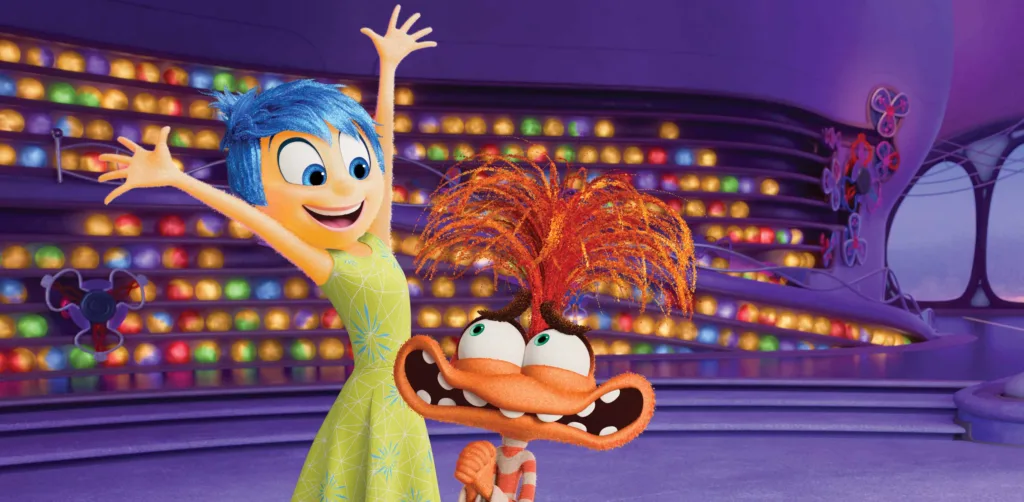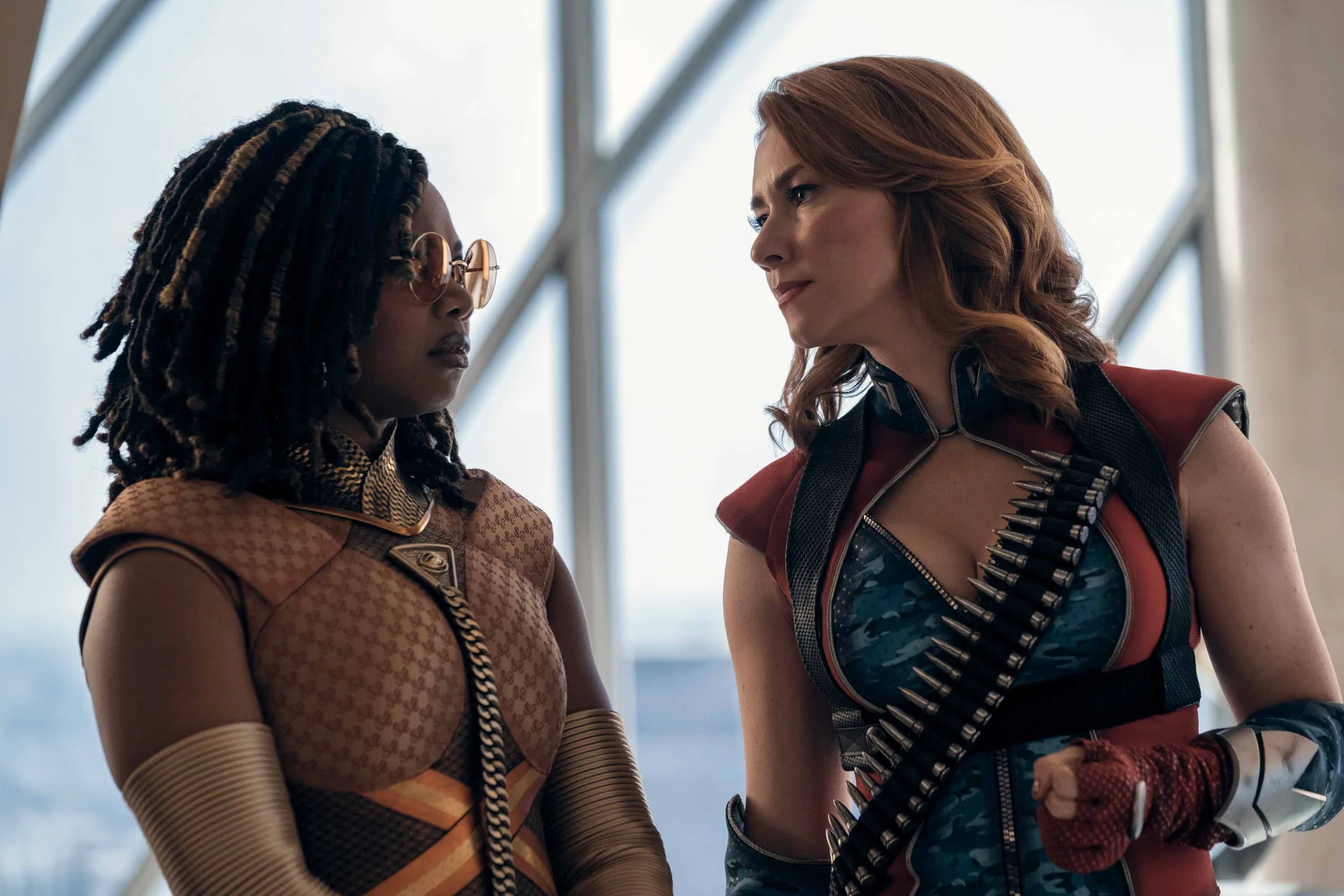The new Pixar movie cannot match the greatness of its decade-old predecessor. It’s nigh impossible. But thanks to a new emotion, Inside Out 2 pushes into more complex territory.
Akhil Arora, a member of the Film Critics Guild and a Rotten Tomatoes-certified film critic, who saw Inside Out 2 in IMAX 3D. He has been reviewing movies and TV series since 2015 and has written for NDTV and SlashFilm.

Inside Out was a breathtaking showcase of Pixar at its best. In imagining our inner selves, the original Pixar movie gave life to our warring emotions, how memories are formed or repressed, and what it means to embrace great change. It truly understood how our brains work. But it wasn’t a philosophical treatise—Inside Out was great entertainment too. Amy Poehler’s unbridled optimistic Joy was a driving force behind that. She contrasted nicely with Anger’s (Lewis Black) outbursts, Fear’s (Bill Hader) jittery and Disgust’s (Mindy Kaling) judgmental behaviour, and Sadness’ (Phyllis Smith) willingness to wallow.
On top of all that, it dove deep. In exploring how we become who we are, it touched upon what makes us us and what we lose as we grow up. As Riley—the human whose brain the film is set inside—dealt with moving from Minnesota to San Francisco, her emotions went through it as well. Joy came to accept how Sadness can be useful. Inside Out checked all the boxes. So, naturally, the question is: how do you top something like that?
Inside Out 2 is no Inside Out but few are
The sequel—Inside Out 2—doesn’t have the benefit of wowing us with its conceptualisation of the human consciousness. But it does have new ideas. They add a layer of complexity, an attempt to portray how personality develops. What defines how we express ourselves? How do we make the choices we make? And what happens when we don’t know who we’re meant to be? All this is fitting for Riley is transitioning into a new phase of life. In more ways than one, which means personal loss and dealing with new emotions. It also means dealing with situations that you are uncomfortable in, ones that force you to pick sides, even when you’re not quite sure where you belong. It’s like being thrown into a hell pit and figuring out your place amidst the chaos of reality.
In his feature directorial debut, working off a screenplay by returning Inside Out co-writer Meg LeFauve and Kidding creator Dave Holstein, Pixar veteran Kelsey Mann solidly builds off the foundation of the first film. At times, you can sense Inside Out 2 is trapped within the framework it borrows. But it does well enough to craft moments that hit home. It’s no Inside Out, but then again, very few are.

Make room for new emotions
While it’s been almost a decade in our world, Inside Out 2 is set just a year after the events of the first film. Following a successful championship, 13-year-old Riley (Kensington Tallman) is going to a three-day hockey camp with her middle school best friends Grace (Grace Lu) and Bree (Sumayyah Nuriddin-Green). She’s particularly excited because she’s going to meet Valentina “Val” Ortiz (Lilimar), a fellow hockey player at her high school she admires. The night before, Riley is—or rather, the emotions in her mind are—rudely woken up by an alarm. It’s called puberty. Soon, a demolition crew tears through Headquarters to make room for the new guys. Wait, hold on, what new guys?
There are new guys in the voice cast, too. Tony Hale takes over for Hader as Fear while Liza Lapira replaces Kaling as Disgust. Both turned down the sequel because Disney reportedly offered them very little versus Poehler’s $5 million fee. It’s part of the studio’s efforts to trim costs. How is this still a $200 million movie?
Inside Out 2 introduces new emotions to spice it up. There’s Envy (Ayo Edebiri), a tiny, cyan-coloured blob who’s forever wondering how to get what the other has. Her contrast in size is the big pink aloof Embarrassment (Paul Walter Hauser) who does his best to disappear into his hoodie whenever called upon. We’ve Ennui (Adèle Exarchopoulos), an indigo-coloured droll stick who’s always sloped over and so uninterested that she can’t even be bothered to get up and operate the console. Instead, she does it via an app on her phone. But the best of the lot—the one given the most attention and screentime—is Anxiety (Maya Hawke), an orange energy drink guzzler whose frazzled hair and chattering teeth communicate everything.
A fight over Riley’s sense of self
While most of the four new emotions are happy to take a backseat and play a bit part role, Anxiety is the opposite. Just as you’d expect from someone of her name. Always worried about what’s coming next and trying to keep Riley prepared, Anxiety takes over Inside Out 2. As Riley learns that her best friends are going to a different high school, she’s caught between spending the last few days with them (as Joy wants her to) or building her high school future by being with Val and her Fire Hawks, the high school hockey team (as Anxiety believes she should). This turns into a fight between Anxiety, a textbook over-planner, and Joy, who’s used to getting her way and steering Riley’s life.

Anxiety feels Joy and Co. are basic emotions and that Riley needs more complex ones. She engages in a hostile takeover and boots the five of them—Joy, Fear, Anger, Disgust, and Sadness—out of Headquarters. This is where that new idea comes in: a Sense of Self. As Riley has grown, a new part of her mind has opened, where her memories contribute to how she feels about herself. Joy had been carefully tending to it like a garden, only keeping those that foster the belief “I’m a good person.” She had been sending off all the other thoughts to the back of Riley’s mind and passing it off like it didn’t matter. With Joy and the others gone, Anxiety begins planting new ideas in that garden and establishing new beliefs like “If I’m good at hockey, I’ll have friends.”
Inside Out 2 is a wild and colourful ride
Shuttled off to the back of the mind, Joy and the “basic emotions” must find a way back to Headquarters. The primary blocks of Inside Out 2’s narrative can feel repetitive, given Joy and Sadness went through a similar adventure in the original movie. The sequel serves up colourful suppressed emotions as well like Bing Bong. In a sequestered Vault, they meet a Barney rip-off Riley loved as a pre-schooler, his bottomless fanny pack friend who always offers three choices, and a retro fighting video game character who has a useless power move and can only move in certain directions. While the humour they provide quickly wears off, the note-perfect animation impressed me more. They match the world they stem from, be it like 2D sticker art or pixelated early 2000s graphics.
Along the way, Inside Out 2 serves up terrific moments. Rare peeks into the minds of parents clue us in on how mum (Diane Lane) and dad (Kyle MacLachlan) are feeling about Riley hitting puberty. June Squibb has a recurring jokey presence—she’s too early for Riley—as Nostalgia, an old woman dressed in beige and with a walking stick. However, I felt the film could’ve extended this and given her a fitting presence elsewhere. When Riley is embarrassed because of her middle-school music choices, Ennui steps in to play her biggest role in the film, leading to a whole new seismic occurrence in Riley’s mind.
The best of the lot involves Riley’s best friends in a scene where Inside Out 2 offers a peek into everyone’s minds. Feeling that her friends are hiding something, Disgust closely observes the facial expressions of Riley’s friend. Only for the Disgust in the friend’s mind to observe Riley in turn and learn that Riley knows she’s hiding something. It proves to be too much for the third friend caught in between. Nervous, her emotions literally spill the tea, and she blurts out the secret they’ve been keeping.
A more complex, sophisticated tale
As with the first one, it’s the dynamic between the emotions and how they each display themselves that powers Inside Out 2. (From Envy to Ennui, and from Anxiety to Embarrassment, the new emotions are wonderfully drawn and animated—from their behaviour to dialogue to how they even look.) And if the original movie was about Joy learning to live with Sadness, the sequel is about Anxiety learning to control herself. Appropriate, given the teenage theme.
Riley is super anxious because she’s dealing with questions she’s never faced previously. Anxiety helps her fit in by saying things that others may want to hear or behaving in ways that help you associate with the crew. She’s afraid of a friendless future. Hopefully, by shedding all of Riley’s old skin and growing her a new Sense of Self, Anxiety believes she can prevent that calamity. But in craving societal approval, pushing for limitless success, and living in near-existential dread, Riley spirals. Who is she today, if she’s forever chasing away the potential horrors that lie on her path?
It helps that Hawke is more than able as Anxiety. She’s great at conveying that she’s only looking out for Riley. You know you need a little of her to balance out Joy’s delusional hope, but you also know that you are headed for disaster if only Anxiety is at the wheel. She helps teach Joy that no one is just one person. They don’t get to choose who Riley is. After all, she isn’t one thing, there’s a multitude in everyone. It’s complicated.

The film, too, is complex because of that idea. A little more adult. It’s growing up like its human protagonist. Thanks to Anxiety—the best new addition—Inside Out 2 leaves its old sense of self behind. But it’s an expansion, not an evolution. It knows it cannot top its predecessor. (That said, thanks to the pandemic, recent output, and Disney’s release strategies, it feels like the first good Pixar movie on the big screen in a while.) But you can tell Pixar is learning to accept and embrace that limitation. As Joy tells Anxiety towards the end, learn to control the things you can affect and not worry about the ones you can’t. It’s about finding harmony.
Inside Out 2 released on June 12 in Germany and the Philippines, June 13 in Australia and Singapore, June 14 in the US, the UK, Canada, Ireland, India, Pakistan and Nigeria, and June 27 in New Zealand.
- Death Stranding 2 review: drifting into doubt – December 23, 2025
- Every Indian Netflix original movie, ranked – December 19, 2025
- All 37 Marvel Cinematic Universe movies ranked, including The Fantastic Four: First Steps – August 3, 2025




What do you think?